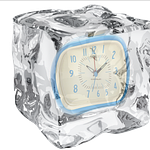I’ve been stationed in many a cubicle in my work life: beige, grey, light green (I think that was my favorite), each a definitive non-statement of industrial design, constructed from canvas and oddly non-magnetic steel, semi-surrounding us like parentheses.
It’s the evolution of sitting at one’s desk in a classroom. The desk was never really yours, you just sat there. But often one found the names of past inhabitants written or (even more boldly) carved into the wooden desktop, concave letters embellished with the ink of many a ballpoint pen, decades of students drowsily following the original lines, deepening them, while listening to others “read aloud from the book”.
Wooden schooldesks represented a historically significant yet unauthorized sculptural legacy, ruined by the development of space age mar-proof materials which resisted even the permanent marker, soulless surfaces where the pointy end of a compass could never produce a truly satisfying result, impressions too shallow to leave one’s metaphorical mark. Plus, schools eventually reclassified the compass as a weapon rather than an essential educational tool. There lies tradition.
The new “desktop” of the computer screen, while infinitely customizable, holds no legacy. It is the very definition of ephemeral, leaving no mark whatsoever, in fact disappearing entirely while you’re still sitting there if not engaged with.
I’ve never left my name on a cubicle. Underneath the rolling drawer unit at my current job I found a lipstick that looked expensive, but my co-workers quickly reclassified it as mid-level at best. It was not a name, just some light evidence that a previous resident of my current space had experienced the loss an easily replaceable cosmetic.
Although I have inhabited many a cubicle, I feel extremely lucky that I have never been farther than the flight distance of a hastily folded paper airplane from a window.
I was once offered a job that paid nearly ten percent more than the one I had, but it was in the basement of a twenty story building. Oh, they interviewed me (and told me the part about the salary) on the eighteenth floor, high above the hoi polloi; then we took the nice elevator (with the wood paneling) down to the first floor, went through a large set of metal doors at the end of a long hallway, transferred to a service elevator with blankets on the walls, and went down FOUR FLOORS.
The room we entered was vast, ceiling almost two stories high, but I could still feel the weight of the entire building above us as the air conditioning audibly struggled to pump enough oxygen into the space to support a free range pen of professional graphic artists. One of them had printed out a photo of a window and placed it on the wall beside them. I did not take the job, and have since considered window access part of every pay package.
The modern interpretation of ergonomics (or the science of understanding humans within a system) seemed more clearly rooted in economics when the cubicle was abandoned by many larger corporations in favor of the Open Layout. Here six, eight, or ten people shared a single long table, like in a dining hall at a summer camp. The pitch was: with no walls at all, employees will be granted the freedom to better communicate and bond. The reality was: you could fit 1/3 more people in a room that way, saving millions in rent.
I was deep in corporate America when this wave hit, and remember being told that each employee would get 32 to 36 inches of space, not on each side, but in total. No room for phones anymore – they’d have to use their own. Plus (special bonus) when an employee was out for any reason, another employee could use the same space. This office space design logic was obviously based on that of the “food court”, money saving trends which dissolved once we all had to stay six feet apart from one another.
While I’ve had offices, they can be isolating. I liked to use them best as meeting centers for my department, both for official business and random celebration. But thousands of hours were spent alone, hidden away, awash in light toil, where one might appreciate the unintentional sigh of a nearby co-worker awash in their own.
Thus experience has led me to appreciate the cubicle as both a literal and figurative middle ground between open and closed workspaces, a non-permanent home away from home, seemingly designed by the fourth little pig, the one between the sticks one and the brick one: the prefab pig who loved walls but didn’t really want to get mortar all over his hooves and got eaten by the wolf since he was only surrounded on three sides.















The Workplace.